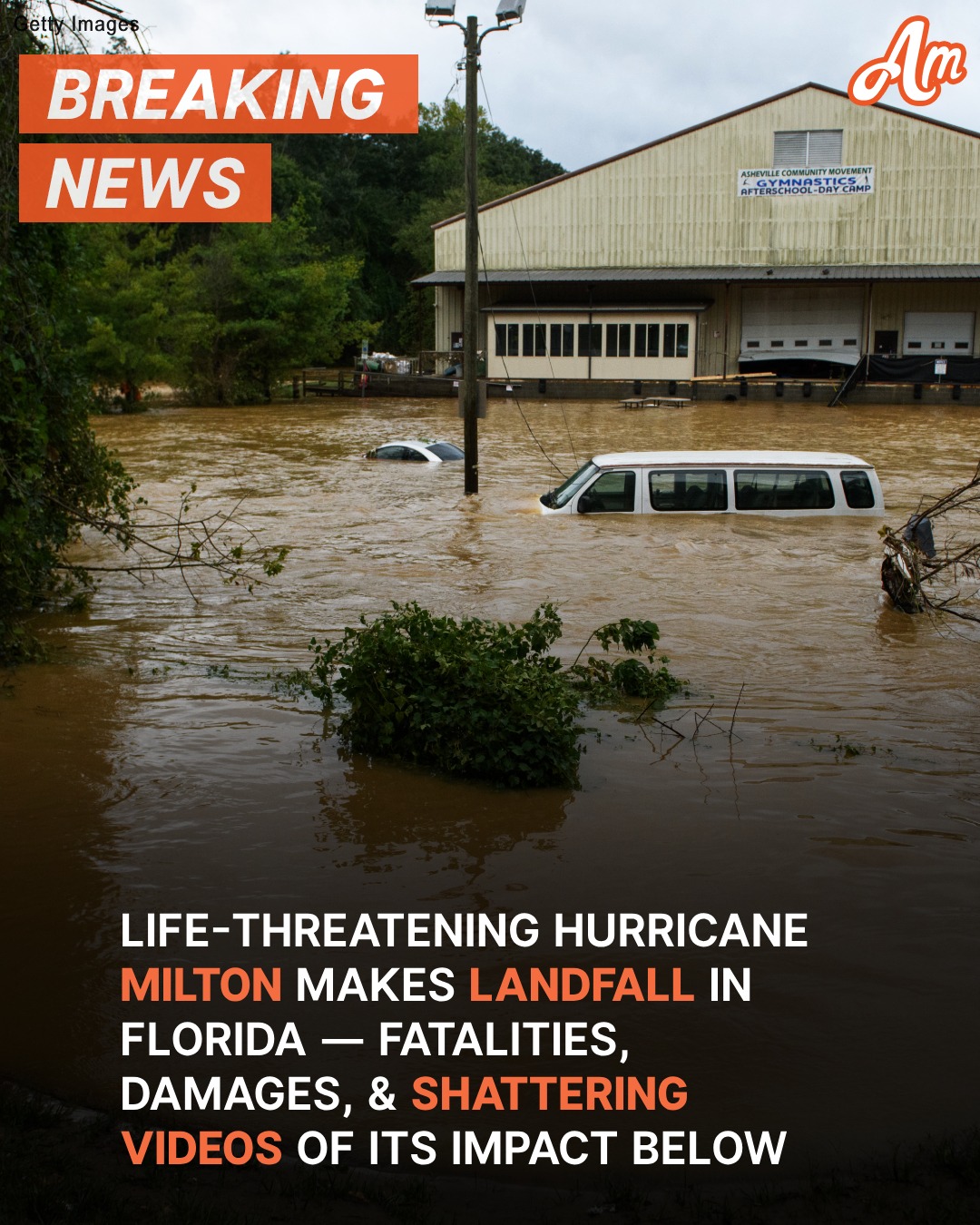As night fell, Hurricane Milton made its violent entry onto Florida’s Gulf Coast, bringing with it deadly tornadoes and devastating floods that knocked out power for millions and wreaked havoc on entire communities.

The storm, a formidable Category 3 hurricane, touched down near Siesta Key in Sarasota County on October 10, around 8:30 p.m. With wind speeds exceeding 120 mph and relentless rain, Hurricane Milton carved a path of destruction, particularly affecting Sarasota, Manatee, and Hardee counties. More than 1.1 million homes and businesses were left in the dark as the storm ravaged the region.
The Florida Division of Emergency Management (FDEM) urged residents to “continue to shelter in place and remain vigilant” through official Facebook posts. As the hurricane drew closer, multiple tornadoes spawned in St. Lucie County, leaving a trail of severe damage and loss of life.
Sheriff Keith Pearson confirmed “multiple fatalities” at the Spanish Lakes Country Club, a senior community located near Fort Pierce. However, the exact number of deaths remains unclear as search and rescue teams continue their tireless efforts. “They are listening for life,” Pearson explained, detailing how rescuers combed through the wreckage, hoping to find survivors.
St. Lucie County was particularly hard hit by the storm, and emergency responders have been working around the clock to aid those affected. Statewide, approximately 125 homes were confirmed destroyed, mainly in senior mobile home parks, according to FDEM Director Kevin Guthrie. The destruction caused by the tornadoes compounded the devastation already wrought by the hurricane’s powerful winds and torrential rains.
Governor Ron DeSantis spoke about the hurricane’s widespread impact, noting that the storm triggered 116 tornado warnings across Florida. A total of 19 tornado touchdowns were confirmed, further highlighting the far-reaching effects of Hurricane Milton.
One of the most affected areas was St. Petersburg, where a historic amount of rainfall overwhelmed the city. Over nine inches of rain fell in just three hours, an event meteorologists labeled as a one-in-1,000-year occurrence. On October 9, the National Hurricane Center issued a flash flood emergency for St. Petersburg, Tampa, and Clearwater.
The rain caused significant flooding, submerging streets and trapping residents in their homes. St. Petersburg’s Albert Whitted Airport recorded an astonishing 16.61 inches of rain on October 9, resulting in dangerous, life-threatening conditions. Wind gusts reached up to 102 mph at Sarasota-Bradenton International Airport and hit 105 mph at Egmont Channel, as Hurricane Milton continued its march across Florida. At the time, the storm was located just 20 miles northeast of Sarasota and was moving east-northeast at 16 mph.
The National Weather Service issued dire warnings for the area, alerting residents that life-threatening flash floods were imminent. Rainfall totals that would normally be seen over several months were recorded in just a matter of hours. Emergency alerts were sent out, urging people to move to higher ground and avoid flood-prone areas.
State and local authorities have launched an extensive emergency response to the disaster. Task forces and rescue teams have been deployed to the hardest-hit regions, with their primary focus on saving lives. Sheriff Pearson emphasized, “Our No. 1 goal is life safety,” as rescue workers continued searching for those who may be trapped under debris.
As Hurricane Milton moves further inland, it has weakened slightly but remains a significant threat. Residents are encouraged to stay informed and follow official guidance as Florida grapples with the aftermath of the storm. With widespread damage, power outages, and loss of life, the true scale of Hurricane Milton’s devastation will take time to fully assess. Florida now faces a long and challenging road to recovery.





